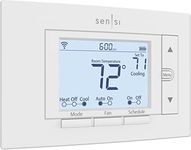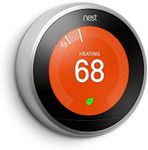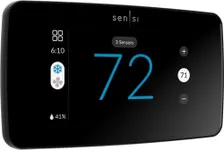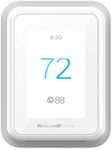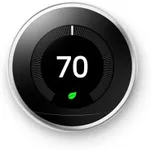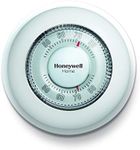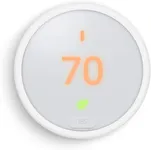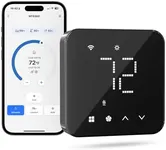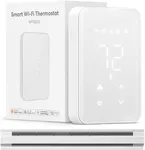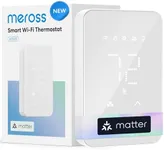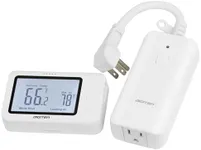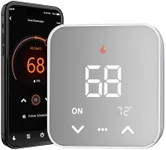Buying Guide for the Best Simple Thermostat
Choosing the right thermostat for your home can significantly impact your comfort and energy efficiency. A thermostat regulates the temperature of your home by controlling your heating and cooling systems. When selecting a thermostat, it's important to consider various features and specifications to ensure it meets your needs and preferences. Here are some key specifications to consider when choosing a simple thermostat.Type of ThermostatThermostats come in different types, including manual, programmable, and smart thermostats. Manual thermostats require you to adjust the temperature settings yourself, which can be less convenient but are straightforward to use. Programmable thermostats allow you to set schedules for different times of the day, helping you save energy by automatically adjusting the temperature. Smart thermostats offer advanced features like remote control via smartphone apps and learning your preferences over time. Choose a type based on your comfort with technology and your desire for convenience and energy savings.
CompatibilityCompatibility refers to whether the thermostat will work with your existing heating and cooling system. It's important to check if the thermostat is compatible with your HVAC system, whether it's a single-stage, multi-stage, or heat pump system. Some thermostats are designed to work with specific systems, so make sure to verify this before purchasing. If you're unsure, consult your HVAC system's manual or a professional to ensure compatibility.
Ease of UseEase of use is crucial, especially if you prefer a straightforward and hassle-free experience. Look for thermostats with clear displays, intuitive controls, and easy-to-understand instructions. Some models come with touchscreens, while others have simple buttons or dials. Consider who will be using the thermostat and choose one that everyone in your household can operate comfortably.
Display and InterfaceThe display and interface of a thermostat can affect how easily you can read and adjust the settings. A clear, backlit display is helpful for reading the temperature and settings in low light conditions. Some thermostats offer large, easy-to-read numbers and simple interfaces, while others may have more complex menus and options. Choose a display and interface that you find easy to navigate and read.
Temperature Control RangeThe temperature control range indicates the range of temperatures the thermostat can regulate. This is important if you live in an area with extreme temperatures or have specific temperature preferences. Most thermostats cover a wide range, but it's good to check if the range meets your needs. For example, if you need to maintain a very low or very high temperature, ensure the thermostat can handle those settings.
Energy-Saving FeaturesEnergy-saving features can help reduce your energy consumption and lower your utility bills. Look for thermostats with features like programmable schedules, eco modes, and energy usage reports. These features allow you to optimize your heating and cooling settings for maximum efficiency. If energy savings are a priority for you, consider a thermostat with robust energy-saving capabilities.
InstallationInstallation can vary depending on the thermostat model. Some thermostats are designed for easy DIY installation, while others may require professional installation. Consider your comfort level with electrical work and whether you prefer to install the thermostat yourself or hire a professional. Check if the thermostat comes with clear instructions and all necessary hardware for installation.
